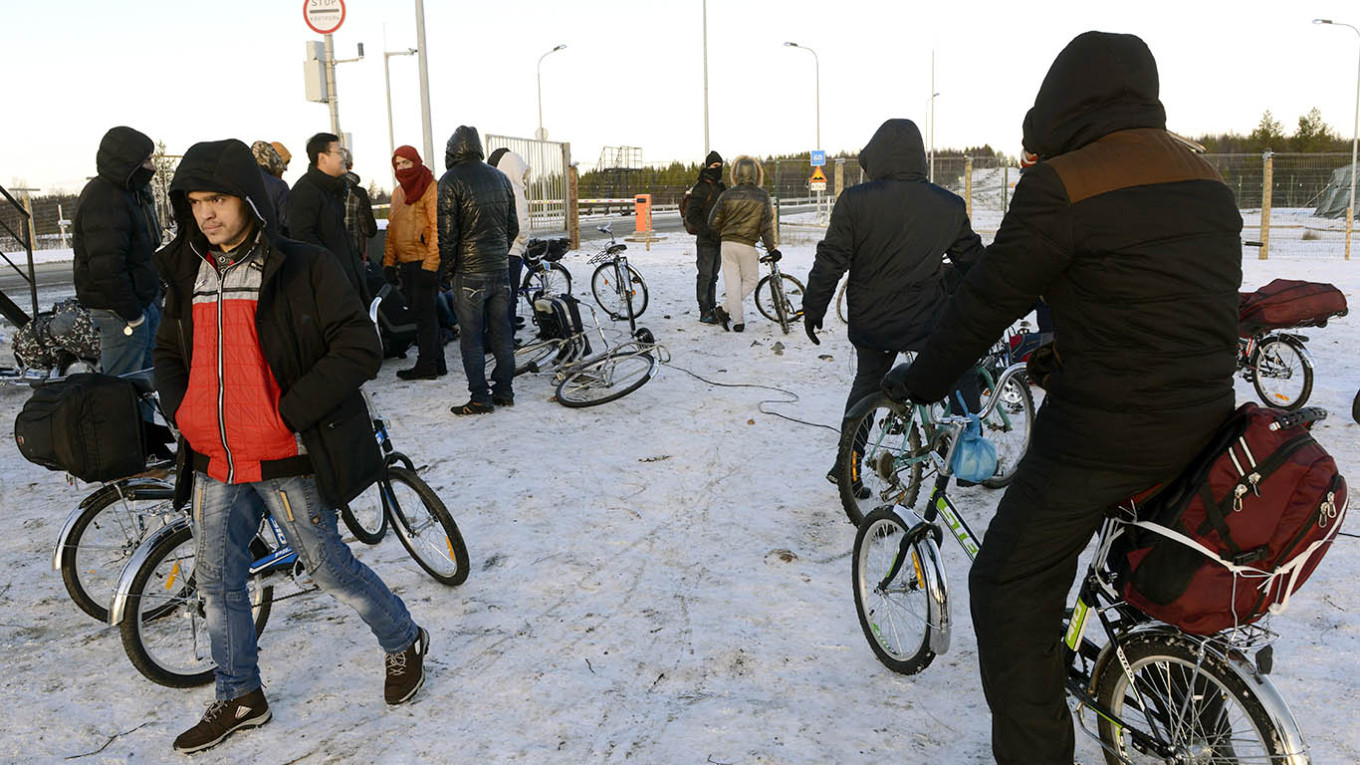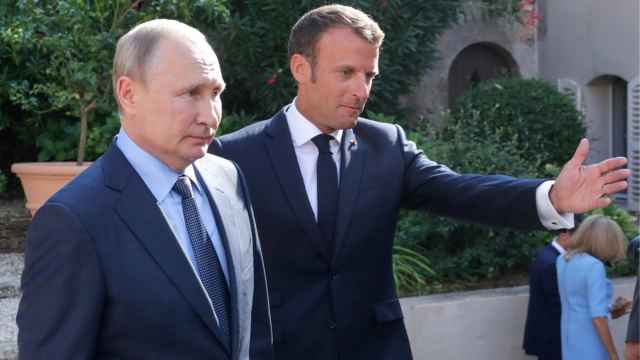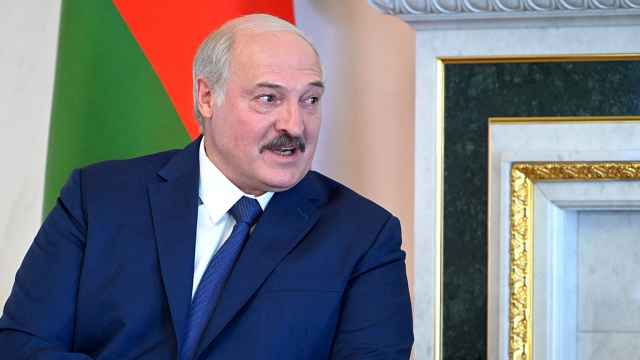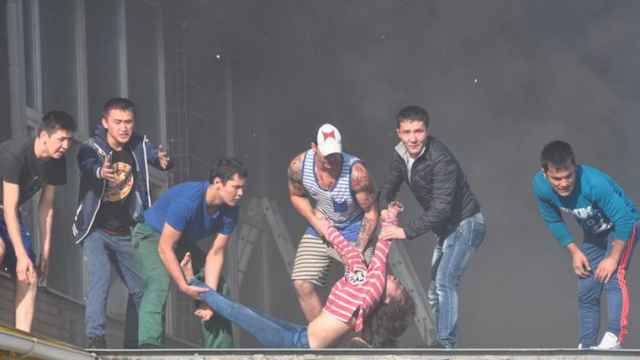Since 2020, stories about the instrumentalized use of migrants have regularly appeared in the news. From Belarus pushing migrants towards Poland and Lithuania in 2021 to Finland closing its border with Russia in late 2023 after a sudden flow of third-country nationals, these episodes are often portrayed as a new hybrid tool used against Europe.
However, our research shows that Russia’s first test run with migrants took place years earlier, high above the Arctic Circle.
In 2015–16, Russia abruptly relaxed its own border controls and allowed more than 7,000 migrants to reach the three northernmost crossings into Norway and Finland. This was not simply a spontaneous by-product of the wider European migration crisis — as Russia argued at the time — but a pilot operation enabled and directed by the FSB with the approval of the Russian leadership.
Russia has a long tradition of using human beings as instruments of state policy. From the Soviet-era gulag system to forced colonisation in border regions, the “passportization” in Georgia and Ukraine and the callous way Moscow sends its own people into the “meat grinder” in Ukraine.
In 2015, instrumentalized migration was added to this toolbox.
The Arctic route to Norway and Finland is not something one embarks upon on a whim. Access to the border zone in Murmansk is tightly regulated, as the region hosts some of Russia’s key strategic nuclear assets on the Kola Peninsula. Foreigners without Schengen visas had long been stopped well before the frontier, and irregular crossings were rare. Yet within months, thousands of people were reaching, first Storskog, then Salla and Raja-Jooseppi in carefully timed waves.
The incidents caused great concern in both Norway and Finland. What worried the two countries was not just the 7,000 who actually arrived, but the implications of Russia making a political decision to abandon practices it had upheld for decades. Moscow’s powers are not limitless in this regard. It has the potential to send far more than 7,000 people and to maintain pressure if it chooses, especially as it can also deport foreign residents from Russia.
The first migrants to reach the Arctic in 2015 were mostly from war-torn Syria and Iraq, making it plausible to assume they had simply found a new route to Europe.
Over time, a more complex picture emerged. Russian consulates began relaxing their visa practices, bringing in migrants from all over the world. Eventually, Russia also started deporting foreign residents, some of whom had lived in the country for many years. In the end, more than 40 different nationalities crossed into Norway and Finland.
Logistics on the Russian side were handled by organised crime groups and “travel package” operators. They could only operate in this highly securitised region because the FSB allowed them to, and decided where and how they could work. First, migrants were sent only towards the Norwegian border crossing at Storskog. Later, the FSB redirected migration towards Finland, but only to its two northernmost crossing points.
At Finland’s busier southern crossings with Russia, traffic continued as normal. Yet in negotiations, Russian officials indicated that they were ready to redirect migration there as well. The message was clear: Russia could escalate if it chose to.
Russia’s readiness to escalate was communicated ambiguously through what Finns call “Russian hints” — remarks that sound innocuous on the surface but carry a veiled threat underneath. Already in the 1970s, Soviet officials signaled they could loosen their grip on the border if Finland soured the relationship.
During the 2015-16 crisis, this pattern continued. Russia reminded both its Norwegian and Finnish counterparts that there were many more foreign nationals — millions, even — inside Russia. Finland’s then Interior Minister later recalled a more direct message when his FSB counterpart remarked that Russia now had “an instrument that works against you.”
Russia never clearly articulated why it sent migrants towards Norway and Finland. But the political context provides some explanation. The EU and Norway had imposed sanctions after the 2014 invasion of Ukraine, political contacts were frosty and Finnish NATO membership — though unlikely at the time — was part of the public debate.
Moscow wanted to restore dialogue and exert influence, but not provoke an open confrontation that might lead to increased NATO presence in the region.
When Norway signaled that it was prepared to close the border and Finland threatened to cancel an upcoming presidential meeting, Russia decided to cease the operation. It stopped as suddenly as it had started, leaving Norway and Finland uncertain as to what would actually happen had they made good on their tougher stances.
One week, there were hundreds of crossings per day; the next week, there were none.
The Arctic operation was less about winning clear concessions than about establishing coercive potential: increasing the sense that Russia always has another lever it can pull.
The shared desire to avoid a wider conflict also explains why both sides continued to adhere to bilateral agreements on border regulation even as the crises unfolded. This produced scenes very different from the images of migrants pushing violently against fences in Poland in 2021.
When Norway changed its migration laws to facilitate returns to Russia, asylum seekers started appearing with freshly stamped Russian expulsion orders. Because crossing the border on foot was banned for safety reasons, migrants were sold bicycles and cycled across.
When Finland in turn banned bicycles, migrants were packed into cars and drove themselves over.
As Finland restricted border traffic, arguing that the stations were full, cars began arriving in convoys, making it physically impossible to lower the barrier between each vehicle.
And so it went on.
Russia’s full-scale invasion of Ukraine in 2022 ended any remaining partnership framework between Moscow and Europe. Finland’s subsequent accession to NATO prompted a renewed migration operation on its borders in 2023. Helsinki responded by closing its eastern land border to Russia. Norway similarly stated it was ready to close Storskog should migrants be directed there.
Russia appears to have accepted this for now and has not pushed migrants towards the Finnish border as seen in Poland. Instead, it has adapted the narrative.
Moscow now frames Finland’s decision as a “Russophobic” provocation and as an infringement of ordinary Russians’ rights. A tool that once served to exert pressure on Finland and Norway is now used as a propaganda itool aimed at Russian audiences.
Yet Finnish authorities assess that Moscow remains ready to reinstate overt pressure if the opportunity arises.
Meanwhile, Russia’s use of migrants is evolving beyond border pressure. In Norway, some of the migrants that were sent across the border were tasked by the FSB with basic intelligence-gathering already in 2015. In Poland, recent reporting suggests that Russian services have recruited immigrants and refugees via Telegram to carry out low-level espionage and sabotage.
For European democracies, Russia’s strategic use of migration poses a real dilemma. Keeping borders open gives Moscow space to run such operations; closing them undermines legal and humanitarian commitments and leaves migrants in the most vulnerable position.
Simply labelling Russia’s actions as “hybrid war” risks missing the point. Its strategic use of migration is more flexible, more political, and more deeply rooted in its statecraft than that label implies.
Understanding how this tool emerged in the Arctic a decade ago is a first step towards understanding how Russia leverages laws and human beings to serve strategic goals; goals that may change over time as Russia tailors its approaches and evaluates the risk involved.
A Message from The Moscow Times:
Dear readers,
We are facing unprecedented challenges. Russia's Prosecutor General's Office has designated The Moscow Times as an "undesirable" organization, criminalizing our work and putting our staff at risk of prosecution. This follows our earlier unjust labeling as a "foreign agent."
These actions are direct attempts to silence independent journalism in Russia. The authorities claim our work "discredits the decisions of the Russian leadership." We see things differently: we strive to provide accurate, unbiased reporting on Russia.
We, the journalists of The Moscow Times, refuse to be silenced. But to continue our work, we need your help.
Your support, no matter how small, makes a world of difference. If you can, please support us monthly starting from just $2. It's quick to set up, and every contribution makes a significant impact.
By supporting The Moscow Times, you're defending open, independent journalism in the face of repression. Thank you for standing with us.
Remind me later.










